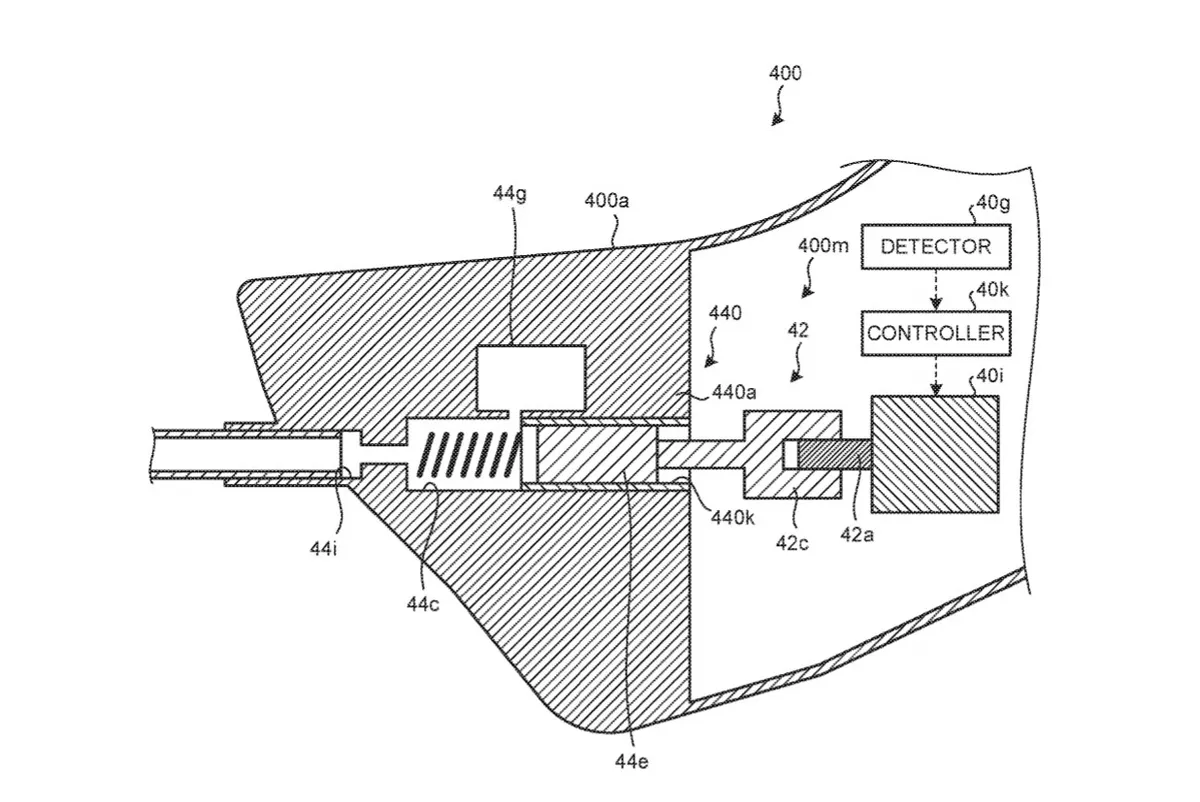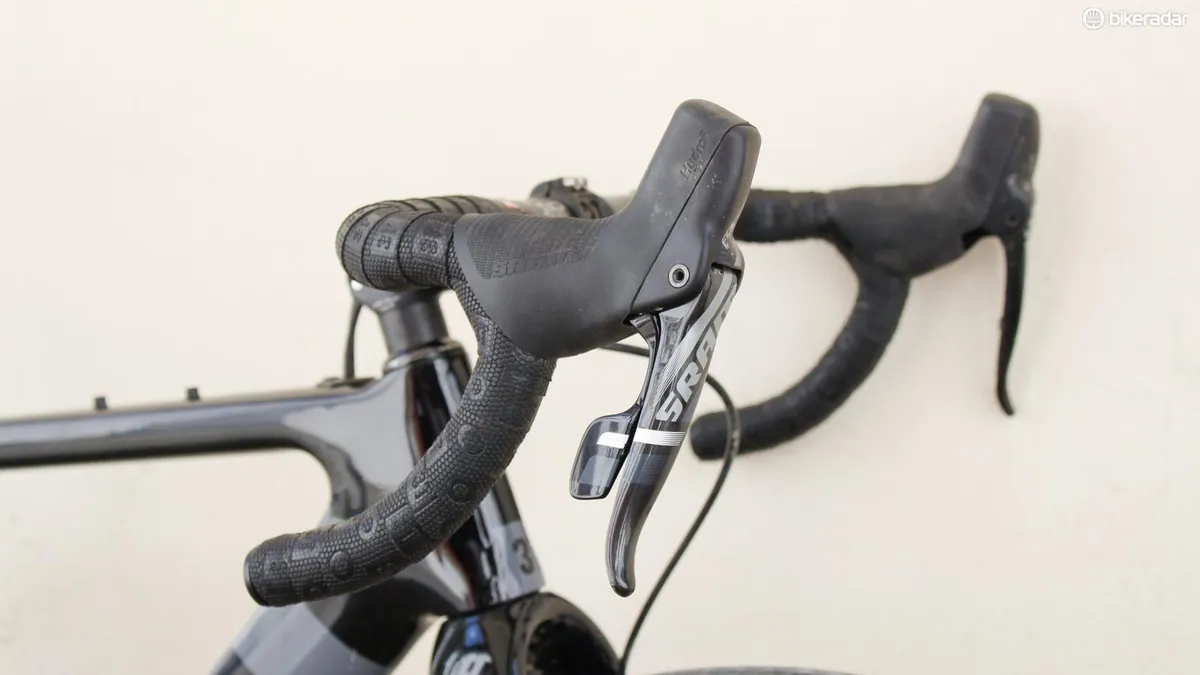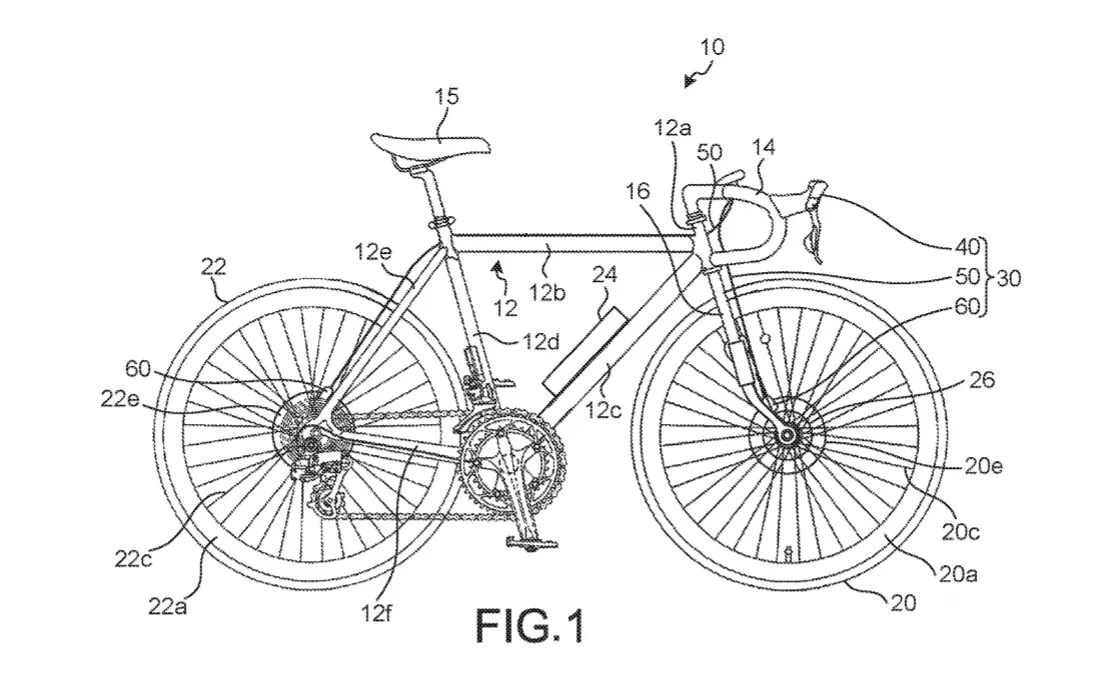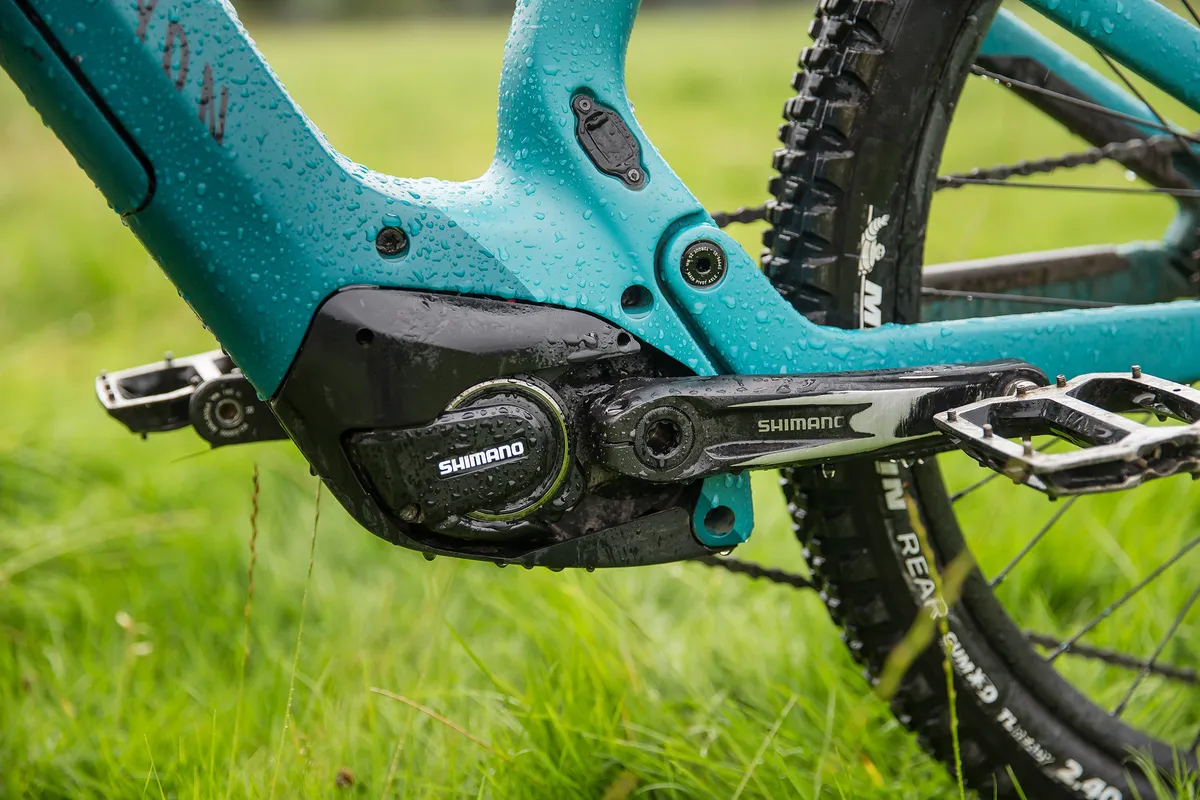Shimano has been granted a patent on an electronic braking system for bikes or other “small vehicles”. The system uses electronics to identify when a rider applies the brakes and a motor to push hydraulic fluid to the brake calipers.
In Shimano’s US patent, granted on 18 May 2021 and picked up by Wheelbased.com, there’s an electronic detector in the brake lever that identifies when you’re applying the brakes and how hard you’re doing so. The detector can also potentially log other inputs, including speed and acceleration.
This transmits an electric signal to a controller, which in turn sends a signal on to an electric actuator, which Shimano says could be a motor, and which moves a piston to push hydraulic fluid from the brake lever via a hose to the brake caliper, to activate the brake. As with a conventional brake lever, there’s a hydraulic fluid reservoir in the lever body.

So rather than your input pulling the brakes on directly, there’s an electronic link between your brake levers, the hydraulic hose and your brakes.
Shimano’s patent says the brake gets its electric charge from either a battery mounted on the bike or a front dynamo hub - or both. It also mentions using the system for cable-operated brakes, as well as hydraulic brakes.
Why does Shimano want electronic braking?
The patent repeatedly discusses the opportunities for reducing the size of the components used in an electronic brake.
Fitting a conventional hydraulic piston into a brake lever body has always been a problem for component makers – witness the large bullhorns on SRAM’s first generation hydraulic road bike disc brake levers. Shimano’s hydraulic road bike levers are typically larger than their mechanical ones, too.

An electronic system would potentially let Shimano move the hydraulic cylinders deeper into the lever body, making for a more compact design, although the obvious question is why not move them somewhere else entirely, like inside a fork leg or as part of the brake caliper, where they’d be even more out of the way.
There could also be a possible weight reduction from shorter or no hoses, though the patent doesn’t discuss this.
Brake-by-wire systems are part-and-parcel of modern hybrid and electric car designs, where a mix of regenerative and conventional braking is used to slow the vehicle, converting some of the deceleration back into electrical energy rather than just using friction from the brake pads to dissipate it all as heat.
With that in mind, even if the tech is novel in bikes, it’s already well-proven. Interestingly, however, although Shimano’s patent mentions powering the system by dynamo, it doesn’t talk about regenerative braking.

Another benefit of brake-by-wire systems is the ability to include anti-lock braking (ABS) – the subject of a Shimano patent previously featured on BikeRadar.
Shimano’s inclusion of a control unit in the control line from the levers to the brake calipers would allow anti-lock braking to be built in, with a sensor from the wheels providing data to the controller so that it eases off the brakes if it senses them locking out.
Will we actually see electronic braking on bikes?
Shimano shows the system applied to a road bike with drop handlebars and the diagrams show lever bodies that are clearly for drop-bar bikes. So will we see a road bike groupset with an all-electronic brake/shifter system any time soon?
Well, it seems unlikely to be an option in the long-awaited new Dura-Ace Di2 R9200 groupset.
Could electronic braking be a viable option for bikes in the future, though? Well, integration and, in turn, a cleaner setup is one of the key trends of recent years, while lowering the risk of skidding out when riding at the limit might be attractive.
However, electronic braking is a significant jump to what we're used to seeing on bikes, and we know that counts for a lot.

That said, electronic braking might also be a good option for electric bikes, where there’s a ready, on-tap source of power for the brake motors.
Regardless of whether we'll see this design come to market any time soon, the integration of electronics into bike components is showing little sign of slowing down.
Electric bikes are getting smarter than ever, SRAM recently trickled its AXS technology down to the third-tier Rival groupset, making wireless shifting more affordable, and our latest reporting suggests the next-generation Shimano Dura-Ace groupset will have semi-wireless shifting.
Would you use an electronic braking system on your bike? Let us know in the comments below.
